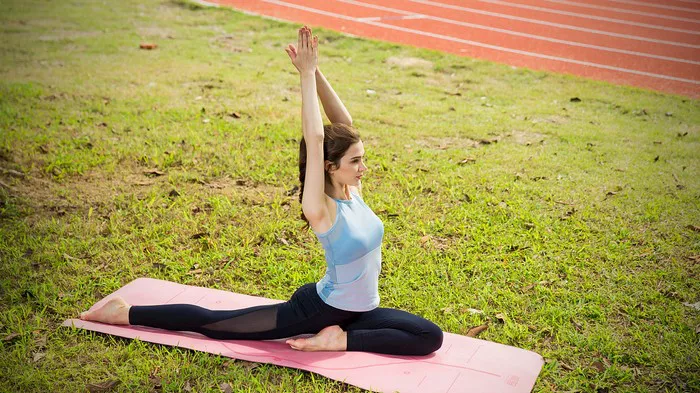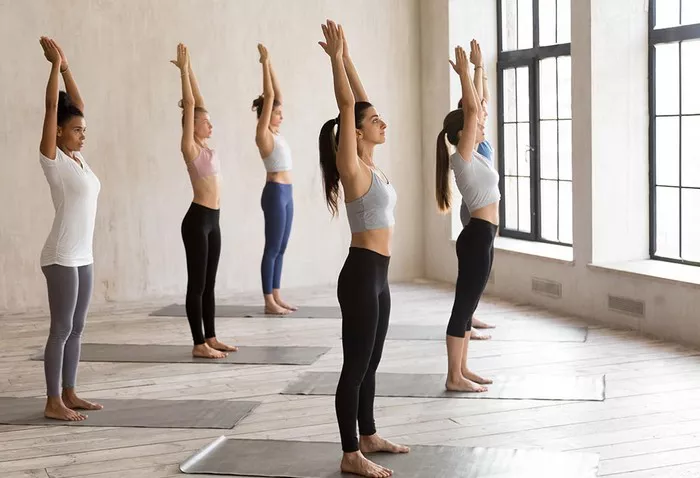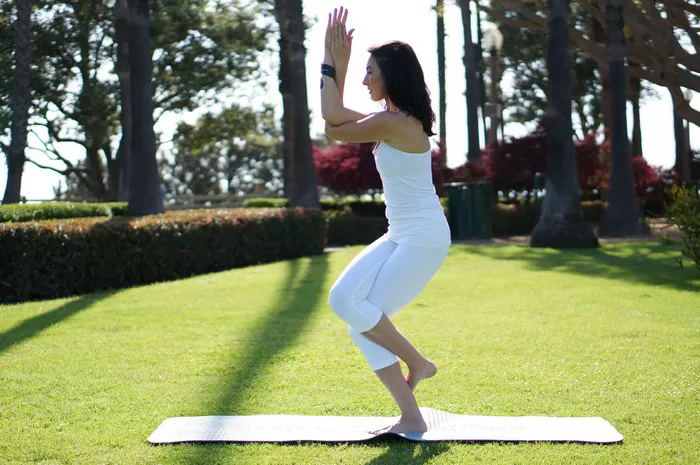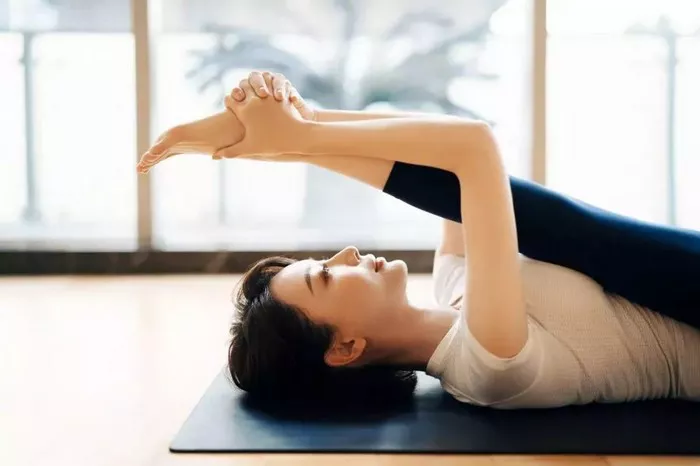Sore muscles are a common complaint among individuals who engage in physical activity, whether it’s due to intense workouts, sports, or simply everyday movements. While rest and traditional methods like stretching and massage therapy are often recommended for muscle recovery, yoga has emerged as a popular alternative for alleviating muscle soreness and promoting overall well-being. In this article, we delve into the evidence surrounding the effectiveness of yoga for sore muscles, exploring its mechanisms, benefits, and best practices.
Understanding Muscle Soreness
Before delving into the benefits of yoga for sore muscles, it’s essential to understand what causes muscle soreness. When muscles are subjected to unfamiliar or strenuous activity, microscopic damage to muscle fibers occurs, leading to inflammation and soreness. This phenomenon, known as delayed onset muscle soreness (DOMS), typically peaks 24 to 72 hours after exercise and can hinder movement and performance.
Yoga: A Holistic Approach to Muscle Recovery
Yoga, an ancient practice originating from India, encompasses a combination of physical postures, breathing exercises, and meditation techniques. While it is often associated with flexibility and stress reduction, yoga also offers numerous benefits for muscle recovery and overall physical health.
One of the key principles of yoga is its emphasis on mindfulness and body awareness. By tuning into sensations within the body, practitioners can identify areas of tension and release muscular tightness. Additionally, many yoga poses involve gentle stretching and lengthening of muscles, which can help alleviate stiffness and soreness.
Research Supporting the Benefits of Yoga for Sore Muscles
Several studies have investigated the effects of yoga on muscle soreness and recovery, yielding promising results. A systematic review published in the Journal of Athletic Training found that yoga interventions were effective in reducing muscle soreness and improving range of motion in athletes and physically active individuals.
Furthermore, a study conducted by researchers at the University of Illinois at Urbana-Champaign demonstrated that participants who engaged in a 12-week yoga program experienced significant reductions in muscle soreness compared to a control group. The yoga group also reported improvements in muscle strength, flexibility, and overall well-being.
Mechanisms of Action
The effectiveness of yoga for sore muscles can be attributed to its multifaceted approach to physical and mental well-being. Several mechanisms may explain how yoga promotes muscle recovery:
1. Improved Blood Circulation: Many yoga poses involve gentle stretching and compression of muscles, which can enhance blood flow to the affected areas. Improved circulation helps deliver oxygen and nutrients to muscle tissues while removing metabolic waste products, facilitating the healing process.
2. Reduced Inflammation: Chronic inflammation is a common contributor to muscle soreness and injury. Yoga practices such as deep breathing and relaxation techniques have been shown to lower levels of pro-inflammatory markers in the body, thereby reducing inflammation and promoting tissue repair.
3. Enhanced Flexibility and Mobility: Tight muscles are more prone to injury and soreness. Yoga promotes flexibility and joint mobility through a combination of stretching and strengthening exercises, helping to prevent muscle imbalances and alleviate stiffness.
4. Stress Reduction: Psychological stress can exacerbate muscle tension and soreness. Yoga techniques such as mindfulness meditation and deep relaxation activate the body’s relaxation response, lowering cortisol levels and promoting a sense of calmness and well-being.
Best Practices for Using Yoga to Relieve Muscle Soreness
While yoga offers numerous benefits for muscle recovery, it’s essential to approach the practice mindfully and with awareness of individual limitations. Here are some best practices for incorporating yoga into your routine to alleviate sore muscles:
1. Start Slowly: If you’re new to yoga or experiencing muscle soreness, begin with gentle, beginner-friendly poses that focus on stretching and relaxation. Avoid pushing yourself too hard, and listen to your body’s signals.
2. Focus on Breath Awareness: Pay attention to your breath during yoga practice, using slow, deep breathing to enhance relaxation and promote oxygenation of muscles. Incorporate pranayama (breathing exercises) to further enhance breath awareness and stress reduction.
3. Modify Poses as Needed: Yoga is a highly adaptable practice, and poses can be modified to suit individual needs and limitations. If a particular pose exacerbates muscle soreness or discomfort, explore modifications or alternative poses that provide similar benefits without strain.
4. Stay Hydrated: Adequate hydration is essential for muscle recovery and overall well-being. Drink plenty of water before, during, and after your yoga practice to support hydration and nutrient delivery to muscles.
5. Combine Yoga with Other Recovery Strategies: While yoga can be an effective standalone practice for muscle recovery, it can also complement other recovery strategies such as foam rolling, massage therapy, and adequate rest. Experiment with different combinations to find what works best for your body.
Conclusion
In conclusion, yoga offers a holistic and evidence-based approach to relieving sore muscles and promoting overall physical and mental well-being. Through its emphasis on mindful movement, breath awareness, and relaxation techniques, yoga helps improve blood circulation, reduce inflammation, enhance flexibility, and alleviate stress—all of which contribute to faster muscle recovery and improved performance. By incorporating yoga into your routine and adopting best practices for safe and effective practice, you can harness its therapeutic benefits and support your body’s natural healing processes.
FAQs:
Is it OK to do yoga with sore muscles?
It’s generally safe to practice yoga with sore muscles, but it’s essential to listen to your body and avoid pushing yourself too hard. Opt for gentle, restorative yoga poses that focus on stretching and relaxation rather than intense or strenuous movements. Yoga can help alleviate muscle soreness by promoting blood circulation, flexibility, and relaxation, but be mindful of any discomfort and modify poses as needed to avoid further strain.
Can yoga help muscle recovery?
Yes, yoga can aid in muscle recovery by promoting blood circulation, reducing inflammation, enhancing flexibility, and alleviating stress. Gentle yoga poses and breathing exercises can help release muscular tension and improve range of motion, facilitating the healing process. Incorporating yoga into your recovery routine can complement other strategies such as rest, hydration, and proper nutrition, supporting overall physical and mental well-being.
What exercises are good for sore muscles?
Exercises that promote gentle stretching, mobility, and relaxation are beneficial for sore muscles. Activities such as yoga, tai chi, swimming, and cycling can help alleviate muscle soreness by increasing blood flow, reducing tension, and promoting recovery. Low-impact exercises like walking or light jogging may also be helpful, but avoid high-intensity workouts that could exacerbate soreness. Additionally, foam rolling, stretching, and massage therapy can aid in muscle recovery by targeting specific areas of tightness and discomfort. Listen to your body and choose activities that feel comfortable and supportive for sore muscles.

















